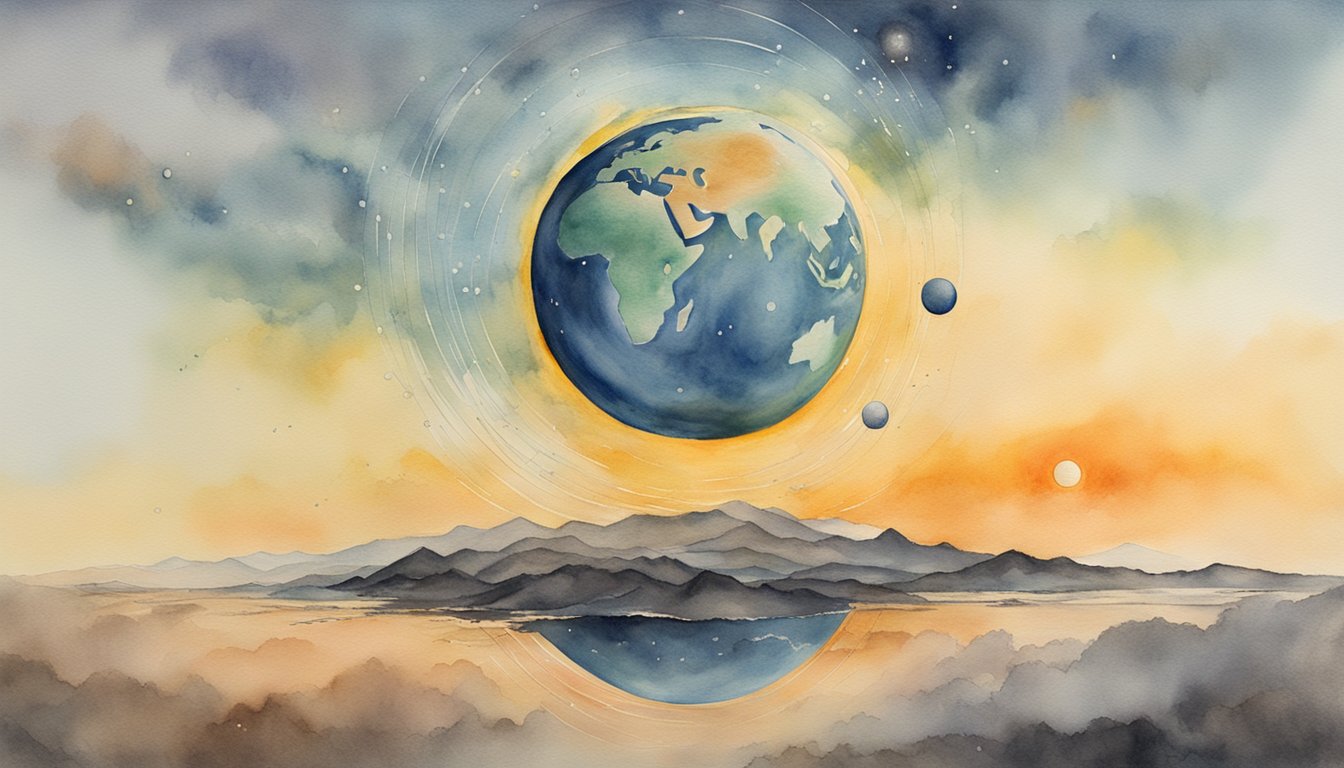Cosmic Timetable

When pondering the ultimate fate of Earth, it’s essential to consider the astronomical events on the Cosmic Timetable. This celestial schedule outlines our planet’s distant future and is governed largely by the lifespan and solar activity of our Sun.
- Currently, the Sun is a stable star, comfortably middle-aged at around 4.6 billion years.
- In approximately 5 billion years, the Sun will exhaust its hydrogen fuel and expand into a red giant.
- As a red giant, the Sun’s outer layers will engulf Mercury and possibly Venus.
- The swelling Sun will radically alter the solar system.
- Intense solar activity and increased heat will have a dramatic impact on Earth’s surface, potentially rendering it uninhabitable.
Solar System Shifts
- Planetary orbits within the solar system could change.
- If Earth survives the red giant phase, its orbit might shift outward, possibly placing it in a new, more distant path around the sun.
The Distant Future
- It’s unclear whether Earth will be consumed by the Sun during its expansion or if it will manage to escape, only to face a bleak and frigid existence as the Sun eventually collapses into a white dwarf.
For those infatuated with the cosmos Empedocles’ Cosmic Cycle provides an intriguing perspective on the cyclic nature of cosmic events. The cosmic timetable may seem like an abstract concept, but it’s based on the predictable and measurable events of stellar evolution. It reminds us of the awe-inspiring and dynamic universe that Earth is a part of.
Planetary Life Cycle

The Earth has undergone incredible changes throughout its history, from shaping continents to hosting a parade of life forms that includes towering dinosaurs and industrious mammals. This ever-changing nature is part of the planet’s life cycle, which includes both terrestrial transformations and external cosmic threats.
Terrestrial Transformations
Earth’s surface is a dynamic mosaic of moving plates and shifting continents. Over millions of years, tectonic plate movements have assembled and fragmented supercontinents, giving birth to the vast oceans and the continents as we know them today. The cycling of these plates not only remolds the Earth’s façade but also drives the creation of life-sustaining elements like oxygen. As continents shift, they can alter global climates, which in turn affect habitability.
Mass extinctions have punctuated Earth’s story, reshaping life across the globe—like the asteroid impact that famously wiped out the dinosaurs and cleared the stage for mammals to thrive. But life’s resilience is also evident, with new species evolving to fill the vacant ecological niches. The climate models that scientists use endeavor to predict life’s future amidst these terrestrial upheavals.
Threats From Space
The terrestrial narrative is only one piece of the puzzle. Outer space presents its own dangers to our planet. Earth has been in the cosmic shooting gallery for eons, with asteroids and comets regularly whizzing by and occasionally striking. While a dinosaur-killer level event is rare, even smaller impacts can have catastrophic effects.
Beyond these rocky visitors, other astronomical phenomena like gamma-ray bursts or the hypothetical Planet X could threaten life on Earth. Planetary scientists work tirelessly to understand these threats and calculate the odds of such events as the Earth continues its orbit in the Milky Way. The end of Earth is not an immediate concern, yet the universe is full of surprises that keep our planet’s fate an ever-compelling story.
Human-Centric Contingencies
In considering when the Earth might reach its end, the role of human actions cannot be overstated. This section unpacks how human factors could hasten or alter the planet’s long-term prospects.
Climatic Challenges
Shifts in weather patterns due to human activity are altering the planet. Climatic threats such as the increase in greenhouse gas emissions have caused global temperatures to rise, leading to an escalation of extreme weather events. These changes threaten not just humans, but also plants and animals, disrupting food chains and ocean currents. A famous report by NASA indicates that rising levels of atmospheric carbon dioxide could have far-reaching effects on Earth’s ability to support complex life.
Anthropogenic Risks
The sheer scale of human consumption and technology poses various risks. Reliance on nuclear fusion and hydrogen fuel remains controversial due to the potential for catastrophic accidents or war-time usage. Additionally, industrial and technological activities could inadvertently trigger disease pandemics, with history providing sobering examples of illnesses that have brought societies to their knees. Meanwhile, the specter of extinction of humanity from an anthropogenic apocalypse looms over discussions of potential technological or war-related doomsday scenarios, as reported by outlets like CNN.
Cultural Theories and Predictions
Throughout history, cultural end-time prophecies such as the Mayan calendar‘s prediction, the religious concept of the Rapture, or mythological events like the Great Flood, illustrate humanity’s fascination with its end. These beliefs, while lacking in scientific evidence, remain entrenched in the public consciousness and often resurface in the context of real-world events. They not only reflect human-centric views on earth‘s end but also influence how societies perceive and react to existential threats.

